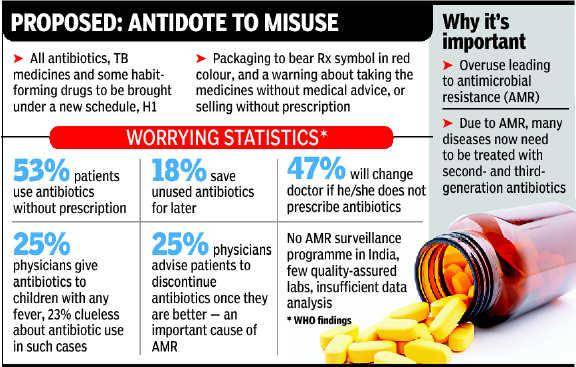GOVT TO CURB PRESCRIPTION AND SALE OF ANTIBIOTICS TO COMBAT DRUG RESISTANCE
DILI (TIMOR LESTE):The government may soon issue restrictions on prescription and sale of commonly used antibiotics in an attempt to avoid development of drug resistance to infectious diseases like tuberculosis, malaria, urinary tract infection and even HIV.
This means doctors and chemists will have to follow certain mandatory protocols and guidelines while prescribing antibiotics. For instance, chemists will have to maintain records of all kinds of antibiotics that they procure and sell along with the doctor's prescription.
The move is part of the new global strategy, adopted by all member countries of the World Health Organization, to fight drug-resistant diseases.
While WHO will assess implementation of the strategy at its ongoing South East Asia Regional Committee meeting in Timor Leste, India is so far ahead of the May 2017 deadline set up at the World Health Assembly meeting of WHO in Geneva in May, officials said. The resolution passed at the Assembly, which is the highest decision making body of the UN agency, asked countries to frame plans by May 2017 and align them with WHO's global strategy.
Standard drug treatment protocol ready
"India is ready with the standard treatment protocol," said Rajesh Bhatia, chief scientific advisor to the regional director, WHO SEARO.
The health ministry, along with central drug regulator Drugs Controller General of India, has already framed standard treatment guidelines, which will be notified very soon, he said.

The guidelines, part of a national action plan on anti-microbial resistance, will present a blueprint with specific norms for doctors, chemists and patients.
While all countries are struggling with the problem of rising drug resistance, India is primarily coping with antibiotics resistance which is posing an increasing threat to treating infectious diseases, as well as undermining many other advances in medicine.
Currently, over 700,000 deaths each year are attributed to drug resistance. In India, an additional two million lives can be lost by 2050 due to drug resistance.
For instance, while India accounts for the highest number of tuberculosis cases, it is also the hub of multi-drug resistant (MDR) tuberculosis. Out of the estimated global annual incidence of 9 million tuberculosis cases, India accounts for 2.3 million.

India tops global chart of TB cases
Apart from the standard protocol, WHO's global plan sets out five key objectives — improve awareness and understanding of anti-microbial resistance, strengthen surveillance and research, reduce incidence of infection, optimize use of anti-microbial medicines, and ensure sustainable investment in countering antimicrobial resistance.
The plan also covers use of anti-microbial medicines in animal health and agriculture, apart from human health.
Source:
http://timesofindia.indiatimes.com/india/Govt-to-curb-prescription-and-sale-of-antibiotics-to-combat-drug-resistance/articleshow/48850004.cms




